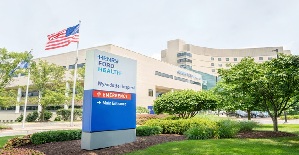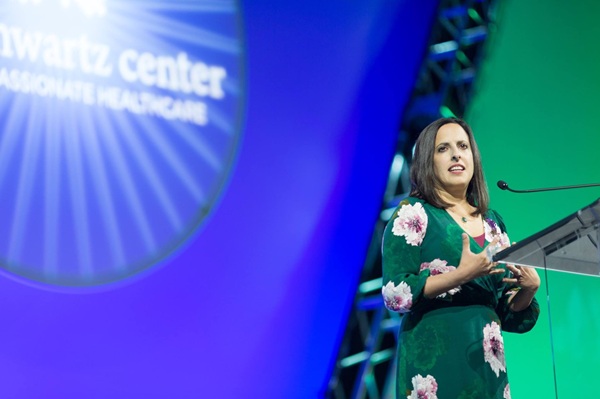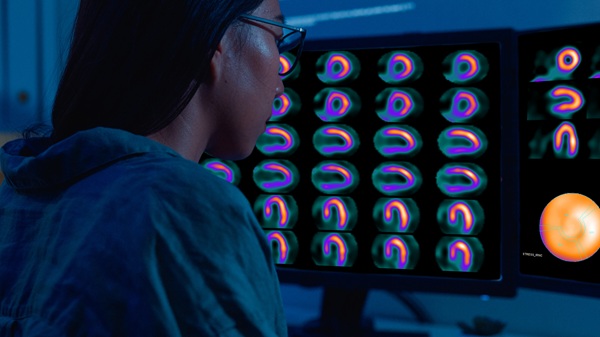Soccer Coach Returns to Field After Heart Valve Replacement
DETROIT - Because of his heart, high school soccer coach Andy Smith faced a life without soccer.
But doctors at Henry Ford Hospital kept the Traverse City resident and Glen Lake High School Varsity Girls’ soccer coach on the field, sending him home 24 hours after implanting a new heart valve with a state-of-the-art, non-invasive procedure on Sept. 18.
“I feel much better than I did even yesterday, aside from a little soreness here,” says Smith, 32, pointing at the spot in his upper leg where doctors the day before had inserted a small tube to place new valve inside his heart. “Now I’m free to do what I want, and live the way I want to live.”
Smith is one of the youngest people in the United States to undergo a Transcatheter Aortic Valve Replacement (TAVR) to replace a valve for a second time. The valve-in-valve procedure is only available through select institutions like Henry Ford Hospital.
Smith’s bicuspid, aortic valve was replaced using traditional surgery nine years ago. But when Smith’s replacement valve began to predictably wear out earlier this year, he was told his first option was another surgery, a metal valve, weeks of recuperation and a lifetime of blood thinners.
And the end of soccer. Even the slightest injury meant serious consequences – including severe bleeding or stroke – due to the blood thinners required for the mechanical valve.
“That would have changed the way I live,” says Smith, who also coaches for the North Storm Soccer Club based in Traverse City and plays in recreational leagues two or three times a week. “I wanted to find an alternative.”
Smith’s hometown cardiologist, James Fox, M.D., of Traverse Heart & Vascular and Munson Medical Center’s Structural Heart Clinic in Traverse City, directed him to the work of renowned interventional cardiologist William O’Neill, M.D. at Henry Ford Hospital in Detroit. As medical director of Henry Ford’s Center for Structural Heart Disease, Dr. O’Neill is known around the world for his advanced procedures. After pioneering the use of angioplasty to stop a heart attack while it is occurring, Dr. O’Neill’s trailblazing efforts are now focused on catheter-based replacement of heart valves, particularly in difficult cases.
Dr. O’Neill used the TAVR approach to replace Smith’s valve on Sept. 18 – and sent him home the next afternoon.
The procedure involves doctors threading the small tube, or catheter, through a blood vessel in the upper leg to the heart’s failing valve. Once the catheter is properly positioned inside the heart, a balloon on the end of the catheter is opened, expanding a new valve. The expansion pushes back the old valve, creating a foundation that holds the new valve in place. Internal video of the procedure shows the frame of the new valve expanding as the heart continues to beat.
The catheter-based procedure dramatically decreases recuperation times by avoiding cutting of the chest or breastplate. It also offers options to those who are not candidates for traditional open heart surgery due to advanced age, chronic illness or weakness.
Dr. O’Neill said it’s gratifying to see a young patient like Smith thriving a day after surgery.
“I’m pleased to give patients like Andrew options,” says Dr. O’Neill. “We strive at Henry Ford Hospital to find solutions to heart problems that can give patients back their lives. This type of valve procedure has the potential to help thousands of people.”
To learn more about the revolutionary work Dr. O'Neill and Center for Structural Heart team are doing for patients with heart valve disease visit the Center for Structural Heart Disease or call (313) 916-1878
.svg?iar=0&hash=F6049510E33E4E6D8196C26CCC0A64A4)

/hfh-logo-main--white.svg?iar=0&hash=ED491CBFADFB7670FAE94559C98D7798)







